|
Small Ruminant Consultant wanted by ILRI in Ethiopia to develop "Integrated herd health intervention (i.e., vaccination, deworming, treatment and awareness creation campaigns) to reduce the impact of small ruminants’ diseases" The Position: The International Livestock Research Institute (ILRI) is looking to hire a Consultant in Animal and Human Health program.
General: The International Livestock Research Institute (ILRI) works to improve food and nutritional security and reduce poverty in developing countries through research for efficient, safe and sustainable use of livestock. It is the only one of 15 CGIAR research centers dedicated entirely to animal agriculture research for the developing world. Co-hosted by Kenya and Ethiopia, it has regional or country offices and projects in East, South and Southeast Asia as well as Central, East, Southern and West Africa. www.ilri.org. Background: Integrated herd health intervention (i.e., vaccination, deworming, treatment and awareness creation campaigns) is preferable to reduce the impact of small ruminants’ diseases since fragmented individual interventions of animal health challenges may not be able to generate sufficient benefits to increase production and productivity. On the other hand, dealing with individual problems might have a small impact, or the impacts might not last long and could also be more expensive to implement. It is known that when farmers participate in defining approaches toward the control and prevention of small ruminant diseases, the results are directly applicable to their own experience and lead to significant improvements in productivity and promote lasting behavior change. The activities in this project focus on small holder farmers who use communal grazing lands and are intended to be undertaken with full engagement of farmers and other stakeholders with a vision to ensure that interventions continue beyond the duration of the project. The project is being implemented in four small ruminants value chain sites: Menz, Bonga, Doyogena and Sekota – Abergelle.
0 Comments
Webinar 1 “Alimentación y nutrición de CAPRINOS en pastoreo en América Latina” Fecha: mayo 26 y 27 de 2021 Duración por días 3 horas (4 a 7 pm - hora Colombia, México (5 a 8 pm – hora Chile 6 a 9 pm - hora Brasil, Argentina) Plataforma: AGROSAVIA – Colombia Temática Día 1 Alimentación de pequeños rumiantes en pastoreo en América Latina 4:00 – 4:30 Saludo de bienvenida y presentación del Webinar. Clara Rúa DR. Suramérica IGA 4:30 – 5:00 Cuantificar el consumo de animales en pastoreo en selva baja caducifolia: ¿Qué comen y cuánto comen en trópico sub-húmedo en época de lluvias y secas? Dr. Pedro González Pech. México (20 min). 5:00 – 5:30 Interacción pulso de precipitación-reserva sobre la producción animal en el Semiárido brasileño. Brasil. Dr. Albericio Pereira de Andrade (20 min) 5:30 – 6:00 Ordenamiento del uso del pastizal natural con manejo caprino de carga caprina en la región Chaco Árido en Argentina. Dr. Patricio Dayenoff (20 min) 6.00 – 6.30 Dieta de caprinos en terrenos de pastoreo del secano semiárido y árido de Chile. Giorgio Castellaro Galdames. Ing. Agronómo, Mg. Facultad de Ciencias Agronómicas, Universidad de Chile Sesión 1 Preguntas 6:30 – 7.00 Temática Día 2 Metodologías para la investigación del pastoreo de pequeños rumiantes en América Latina 4:00 – 4:30 Saludo de bienvenida y presentación del Webinar. Clara Rúa DR. Suramérica IGA 4:30 – 5:00 Metodología para identificar vegetación secundaria con potencial forrajero para la producción caprina. Mónica Cardozo Herrán .CR Colombia (20 min). 5:00 – 5:30 Experiencias en el uso de metodologías aplicadas a la epidemiología parasitológica en la selva. Dr. Juan Felipe de Jesús Torres Acosta (20 min) 5:30 – 6:00. Experiencias en el uso de la vegetación nativa brasileña en el control de parásitos de pequeños rumiantes. Dr. Livio Martins Costa Júnior (20 min) 6.00 – 6.30. Conclusiones y perspectivas a futuro en la temática. Clara Rúa DR. Suramérica IGA Sesión 2 Preguntas 6:00 – 6:30
Esta vegetación heterogénea del trópico sub-húmedo, brinda servicios ecosistémicos y es indispensable en la lucha contra el cambio climático, su preservación debe basarse en reconocer su valor para un aprovechamiento sustentable. Aún si estigmatizada como maleza, ofrece diversidad de alimentos para cabras y ovejas cuyas capacidades de pastoreo y ramoneo son idóneas para su aprovechamiento. El libro es producto de 40 años de investigación y laboriosos trabajos de etología con observación cercana (<1m) de cabras y ovejas en circuitos de pastoreo de 6 a 12km al día en 112 ha de selva baja. Se integra la información de cada planta en 53 fichas con la descripción botánica, usos de la población, disponibilidad en período de lluvias o secas, consumo por cabras y/o ovejas, diversidad de tipos de bocados efectuados por ambas especies de rumiantes, aporte nutricional, presencia de taninos condensados muchos de ellos con efectos positivos en la salud animal. El formato de la obra es útil para técnicos, estudiantes, investigadores, público en general.
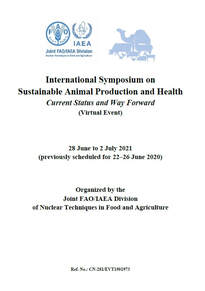 Announcement and Call for Papers A. Background The International Symposium on Sustainable Animal Production and Health – Current Status and Way Forward, postponed due to the COVID-19 pandemic, will draw on lessons learned and current best practices to provide a roadmap for the sustainable improvement of animal production whilst protecting the environment. The focus of the symposium will be on the contributions and impact of nuclear technologies and applications. B. Objectives The purpose of the symposium is:
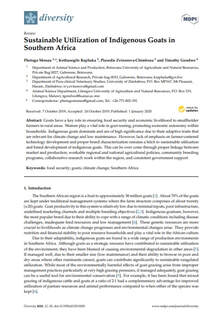 Abstract: Goats have a key role in ensuring food security and economic livelihood to smallholder farmers in rural areas. Women play a vital role in goat rearing, promoting economic autonomy within households. Indigenous goats dominate and are of high significance due to their adaptive traits that are relevant for climate change and low maintenance. However, lack of emphasis on farmer-centered technology development and proper breed characterization remains a hitch to sustainable utilization and breed development of indigenous goats. This can be over come through proper linkage between market and production, workable regional and national agricultural policies, community breeding programs, collaborative research work within the region, and consistent government support. Keywords: food security; goats; climate change; Southern Africa 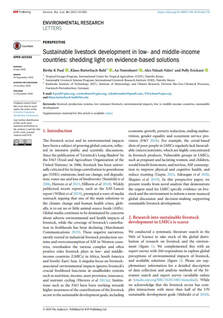 1. Introduction The livestock sector and its environmental impacts have been a subject of growing global concern, reflected in intensive public and scientific discussions. Since the publication of ‘Livestock’s Long Shadow’ by the FAO (Food and Agriculture Organization of the United Nations) in 2006, livestock has been universally criticized for its large contribution to greenhouse gas (GHG) emissions, land use change, soil degradation, water use and loss of biodiversity (Steinfeld et al 2006, Herrero et al 2015, Hilborn et al 2018). Widely publicized recent reports, such as the EAT-Lancet report (Willett et al 2019), prompted a wave of media outreach arguing that one of the main solutions to the climate change and human health crises, globally, is to eat no or little animal source foods (ASFs). Global media continues to be dominated by concerns about adverse environmental and health impacts of livestock, while the coverage of livestock’s contribution to livelihoods has been declining (Marchmont Communications 2019). These negative narratives, mostly rooted in industrial livestock production systems and overconsumption of ASF in Western countries, overshadow the various complex and often positive roles livestock plays in low- and middle income countries (LMICs) in Africa, South America and South(-East) Asia. A singular focus on livestock associated environmental impacts ignores livestock’s crucial livelihood functions in smallholder systems such as nutrition, income, asset provision, insurance, and nutrient cycling (Herrero et al 2013a). Institutions such as the FAO have been working towards higher awareness of the contributions of the livestock sector to the sustainable development goals, including economic growth, poverty reduction, ending malnutrition, gender equality and ecosystem service provision (FAO 2018). For example, the cereal-based diets of poor people in LMICs regularly lack bioavailable (micro)nutrients, which are highly concentrated in livestock products. Vulnerable groups in LMICs, such as pregnant and lactating women, and children, would benefit from more, and not less, ASF consumption to improve physical and cognitive health, and reduce stunting (Gupta 2016, Adesogan et al 2020, Shapiro et al 2019). In this perspective paper, we present results from novel analysis that demonstrate the urgent need for LMIC-specific evidence on livestock and the environment to inform a more nuanced global discussion and decision-making supporting sustainable livestock development. 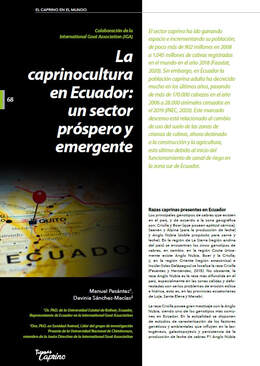 Escrito por Manuel Pesántez and Davinia Sánchez-Macías El caprino en el mundo Colaboración de la International Goat Association (IGA) El sector caprino ha ido ganando espacio e incrementando su población, de poco más de 902 millones en 2008 a 1.045 millones de cabras registradas en el mundo en el año 2018 (Faostat, 2020). Sin embargo, en Ecuador la población caprina adulta ha decrecido mucho en los últimos años, pasando de más de 170.000 cabezas en el año 2006 a 28.000 animales censados en el 2019 (INEC, 2020). Este marcado descenso está relacionado al cambio de uso del suelo de las zonas de crianza de cabras, ahora destinado a la construcción y la agricultura, esto último debido al inicio del funcionamiento de canal de riego en la zona sur de Ecuador. Razas caprinas presentes en Ecuador Los principales genotipos de cabras que existen en el país, y de acuerdo a la zona geográfica son: Criolla y Boer (que poseen aptitud cárnica), Saanen y Alpina (para la producción de leche) y Anglo Nubia (doble propósito para carne y leche). En la región de La Sierra (región andina del país) se encuentran los cinco genotipos de cabras, en cambio, en la región Costa únicamente existe Anglo Nubia, Boer y la Criolla; y, en la región Oriente (región amazónica) e Insular (Islas Galápagos) se localiza la raza Criolla (Pesántez y Hernández, 2015). No obstante, la raza Anglo Nubia es la raza más difundida en el país, especialmente en las zonas cálidas y deforestadas con serios problemas de erosión eólica e hídrica, esto es, en las provincias ecuatorianas de Loja, Santa Elena y Manabí. |
IGA Blog
The International Goat Association promotes goat research and development for the benefit of humankind, to alleviate poverty, to promote prosperity and to improve the quality of life. Archives
May 2024
Categories
All
|
||||||||
|
International Goat Association
2516 Millbrook Rd., Little Rock, AR72227 USA email: [email protected] -454-1641 |
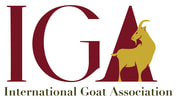
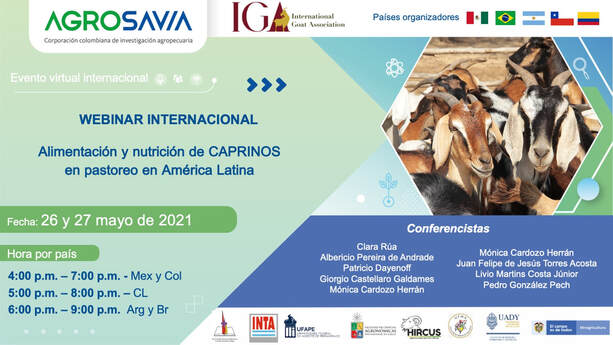
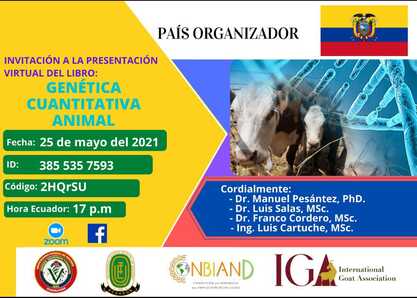
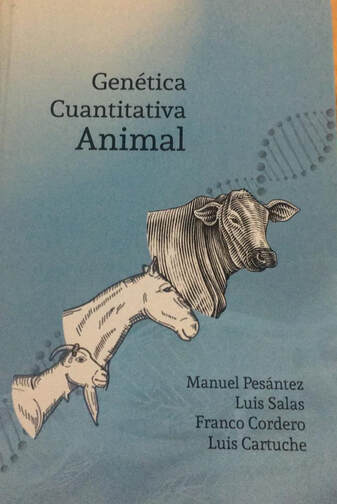
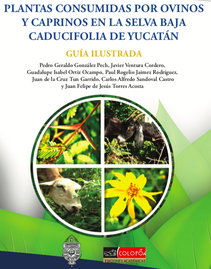
 RSS Feed
RSS Feed